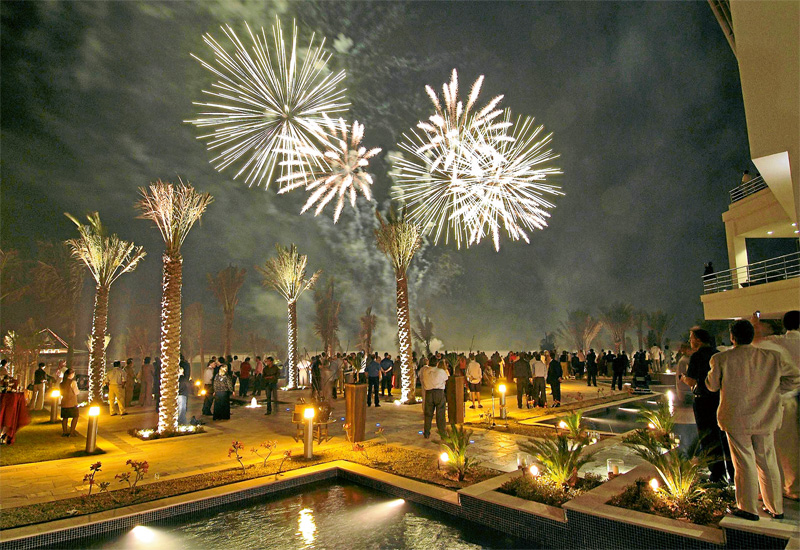Making waves in the mid-market
For the past five years at least, the need for expansion in the mid-market has formed talking points in numerous panel sessions at AHIC. It’s only now though, and looking ahead, that real in-roads appear to be being made into this grossly underserved segment.
“As well as location, the next decade will also see the rise of the mid-range brand such as our Hilton Garden Inn offering,” says Jagersbacher.
“While the region has rightly developed a global reputation as a luxury, upscale destination, informed observers acknowledge that visitor target numbers across a number of local countries will only be achieved by expanding the accommodation options and therefore widening the prospective visitor pool. This is particularly pertinent in relation to upcoming major events such as Dubai’s Expo 2020 and Qatar’s 2022 World Cup,” he adds.

| Advertisement |
Citymax Hotels COO Russell Sharpe, who spoke at AHIC in 2004 while working as regional vice president sales and marketing for Le Meridien, says that this “development of the mid-market will undoubtedly dominate AHIC 2014”.
“Over the coming years, we will see growth in the budget sector throughout the region, especially in KSA where there is still huge potential for both local ‘home grown’ hotel chains and international operators. Franchising and flexible manchise agreements will increase, and contractual agreements will be less rigid, giving owners the flexibility to work with whichever operator matches their own business objectives and ideals,” says Sharpe.
Among the larger companies, mid-market brands represent 30% of Starwood’s pipeline while the last decade has been a “game changer” for Holiday Inn, which IHG is looking to grow “by more than 50% (by number of rooms) in the next three to five years”, according to Pascal Gauvin, COO, India, Middle East and Africa.
This demand is partly because “investors have moved from purely prestige-driven motivation to consideration of yield as a key tool to influence investment decisions,” comments Martin Ostermann, director of development, Meliá Hotels International.
“The shift of the regional midscale and extended stay (serviced apartments) market from independently operated and unbranded units to a consolidated and international offering will continue to be a focus as it combines the residential real estate and hospitality sectors. As such, markets with demand for longer term stay travellers can be expected to benefit from this trend,” Ostermann adds.
Hala Matar Choufany, managing director, HVS, agrees that “with escalating development costs and limited access to financing, more development of mid scale and budget hotels are being considered by investors.
“Also as a result of the downturn and drop in hotel values, there has been an increase in investment-driven projects versus ego driven projects, with the latter being less common in this new environment,” she says.
However, Chiheb Ben Mahmoud, executive vice president — head of hotels & hospitality, Middle East & Africa hotels & hospitality group, JLL, warns that while affordable hotels will be the “common denominator” for the next 10 years, they should not be “cookie cutter budget hotels”. “I mean more intelligent and flexible hotels, more in line with their general environments,” he adds.
Another segment expected to grow in the region is that of branded residential projects. A new speaker for this year’s agenda, Michael Glennie, president and COO of FRHI — which entered Dubai 12 years ago and now operates eight hotels with 4600 rooms across the Middle East — says this is an area in which he is keen for the company to grow.
“A recent trend is the introduction of branded residential products associated with hotel development; it is an efficient mixed-use product when it is well balanced and well defined. FRHI has pioneered in this field in the Americas and is now bringing its expertise to the region on several iconic projects,” says Glennie.
At the same time, he is confident of significant growth for the group’s three existing brands, all luxury.
“We will double the inventory over the next five years with 10 confirmed projects under construction representing another 4600 keys. We have identified a development potential for FRHI in the Middle East of 56 hotels across the three brands. We will consolidate on our existing presence in the Kingdom of Saudi Arabia and the UAE and we will prioritize GCC countries such as Qatar, Bahrain, Oman, and Kuwait, and in the Levant in Jordan and Lebanon.”
At IHG, Gauvin says long-stay products will be a priority going forward. “Long-stay is also of increasing interest to investors. We opened the region’s first Staybridge Suites in Cairo in 2008 and have since tripled that. Over the next three to five years we will open six more Staybridge Suites, three of which will be in Saudi Arabia and two in the UAE,” he explains.
Article continues on next page ...






-AHIC-opening-even.jpg)



 Search our database of more than 2,700 industry companies
Search our database of more than 2,700 industry companies









